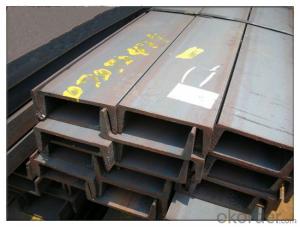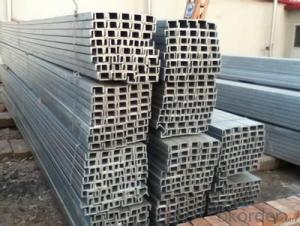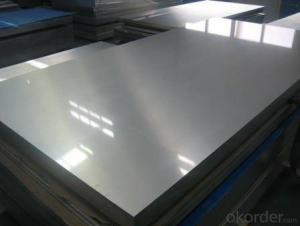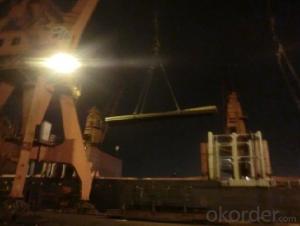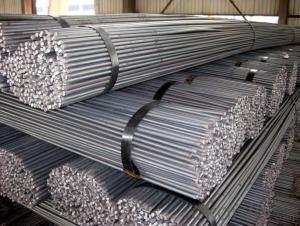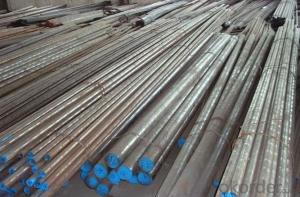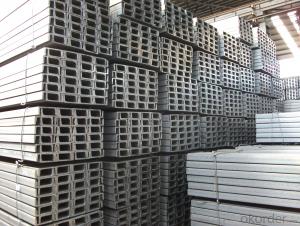Hot Rolled Channel Steel Module of A36 SS400 S235
- Loading Port:
- Tianjin
- Payment Terms:
- TT OR LC
- Min Order Qty:
- 4000 PCS
- Supply Capability:
- 250000 PCS/month
OKorder Service Pledge
OKorder Financial Service
You Might Also Like
Hot Rolled Channel Steel Module of A36 SS400 S235 Details
| Standard: | AISI,ASTM,BS,DIN,GB,JIS | Dimensions: | 50*37*4.5mm-400*104*14.5 | Grade: | A36 SS400 S235JR Q235 Q345 |
| Place of Origin: | China (Mainland) | Brand Name: | CNBM | Model Number: | channel steel A36 SS400 S235JR |
| Shape: | U Channel, U Channel | Application: | construction material or bracket | Perforated Or Not: | Not Perforated |
| Length: | 5-12m | payment term: | T/T.L/C. D/A, D/P and so on | Ceritificates: | CIQ and Mill Certificates |
| experience: | 10 years | Weight: | 5.438-71.488kg/m | Web Thickness: | 4.5-14.5mm |
| Depth: | 50-400mm | Flange Width: | 37-104mm |
Packaging & Delivery
| Packaging Detail: | Export standard packing in mill or as request |
| Delivery Detail: | within 15-30 days after receiving original L/C or deposit |
Hot Rolled Channel Steel Module of A36 SS400 S235 Specifications
Dimensions: 50*37*4.5mm-400*104*14.5
Standard:AISI, ASTM, BS, DIN, GB, JIS
Grade:Q235/Q345,SS400, A36/A572/992,Gr50,S235JRG2,S235/S275/S335JR,ect
Depth: 50-400mm
Flange Width: 37-104mm
Web Thickness: 4.5-14.5mm
Weight: 5.438-71.488kg/m
Length:5-12m
Packaging Details: Export standard packing in mill or as request
Delivery: within 15-30 days after receiving original L/C at sight or deposits
MOQ:5 MT
Hot Rolled Channel Steel Module of A36 SS400 S235 Pictures
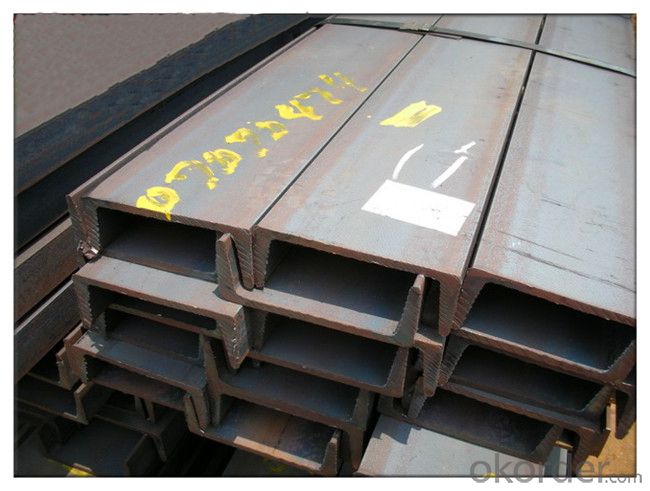

- Q: How long do steel channels typically last?
- Steel channels typically have a long lifespan and can last for several decades if properly maintained. However, the exact duration can vary depending on factors such as the quality of the steel, exposure to environmental conditions, and level of maintenance.
- Q: What does channel C20 mean?
- Channel steel is divided into ordinary channel steel and light channel steel. Standard Specification for hot-rolled plain channel steel is 5-40#. Specifications for hot rolled flexible channel steel supplied by supply and demand agreement are 6.5-30#. Channel steel is mainly used for building structures, vehicle manufacturing, other industrial structures and fixed plates, cabinets, etc., and channel steel is often used in conjunction with i-beam.
- Q: Are steel channels suitable for data center construction?
- Yes, steel channels are suitable for data center construction. They provide strength and durability required for supporting heavy equipment and infrastructure in data centers. Steel channels also offer flexibility for customization and ease of installation, making them a commonly used material in data center construction.
- Q: Can steel channels be used for structural purposes?
- Yes, steel channels can be used for structural purposes. They are commonly used in construction projects as they provide strength and stability, making them suitable for supporting heavy loads and providing structural support in various applications. Steel channels are versatile and can be used in beams, columns, and other structural components to ensure the stability and durability of the structure.
- Q: How do steel channels perform in high-vibration environments?
- Steel channels are commonly used in high-vibration environments due to their excellent resilience and durability. Their solid construction helps absorb and distribute vibrations, minimizing the risk of structural damage or failure. Additionally, steel channels can be reinforced or modified with additional supports to further enhance their performance in such environments.
- Q: What are the different types of loads that steel channels can bear?
- Steel channels can bear various types of loads, including axial loads, which are forces that act along the axis of the channel; bending loads, which cause the channel to flex or bend; shear loads, where the channel is subjected to forces that cause one part of the channel to slide past another; and torsional loads, which twist the channel along its axis. Additionally, steel channels can also bear compressive loads, which push the channel inward, and tensile loads, which pull the channel outward.
- Q: How do steel channels perform in corrosive chemical environments?
- Steel channels generally perform well in corrosive chemical environments due to their high resistance to corrosion. This is primarily because steel, especially stainless steel, forms a protective oxide layer that prevents or slows down the corrosion process. However, the exact performance can vary depending on the specific chemical environment and concentration. It is important to consider the corrosive properties of the chemicals and consult with experts or engineers to select the appropriate type and grade of steel channel for optimal performance and longevity in corrosive chemical environments.
- Q: What is the difference between channel steel and angle steel?
- The cross section of the channel steel is concave, and the cross section of the angle steel is L, forming a 90 degree angle
- Q: Can steel channels be used in outdoor applications?
- Outdoor applications can indeed make use of steel channels. These channels are constructed from robust and enduring steel material, granting them the ability to withstand adverse weather conditions like rainfall, snowfall, and extreme temperatures. Due to their exceptional strength and capacity to bear hefty loads, they are frequently employed in open-air structures such as bridges, highways, and outdoor equipment. Moreover, steel channels can undergo treatment with protective coatings like galvanization or powder coating, thereby bolstering their resistance to corrosion and rust. Consequently, they are perfectly suitable for prolonged outdoor utilization.
- Q: How can channel A and B be distinguished?
- Grade a do not do impact test, B do, B quality is better than A, general bad steel above will have labels
Send your message to us
Hot Rolled Channel Steel Module of A36 SS400 S235
- Loading Port:
- Tianjin
- Payment Terms:
- TT OR LC
- Min Order Qty:
- 4000 PCS
- Supply Capability:
- 250000 PCS/month
OKorder Service Pledge
OKorder Financial Service
Similar products
Hot products
Hot Searches
Related keywords
